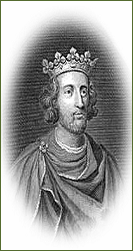|
This included construction of the Pont Neuf, Saint-Louis
Hospital, Place des Vosges and Place Dauphine. He also made extensions to the Louvre after the projected expansion under King
Henri II into a square courtyard, which was known as the "cour carree", was far
from completed.
But King Henri IV always faced constant danger from religious fanatics on both sides,
particularly after granting religious tolerance to Protestants under the Edict of
Nantes. He fell victim to a Catholic fanatic on 14 May 1610, after surviving at
least 23 other assassination attempts.
Louis XIII became king at the age of eight, although political power was exercised by his
mother, Marie de Medicis, in the role of regent. Although King Louis XIII took over
when he reached the age of 15, the real power was exercised by the brilliant but ruthless
Cardinal Richelieu, who expanded royal power.
King Louis's reign saw some major changes to the face of Paris. His mother
commissioned the Palais du Luxembourg, while Cardinal Richelieu built the Palais Royal and
rebuilt the Sorbonne. He also commissioned a number of major Baroque churches as a
statement of the Catholic Counter-Reformation.
King Louis died in 1643, leaving the throne to his 5 year old son Louis XIV.
In a rebellion, known as the Fronde, the new king and his family were forced to flee the
city in 1648. But rebel rule proved considerably worse, and the king returned to a
hero's welcome in 1653.
Royalist France achieved its greatest heights under King Louis XIV, also known as the 'Sun
King'. His minister of finance Jean-Baptiste Colbert undertook lavish building
projects in Paris in an effort to make it fit for the King.
But King Louis XIV detested Paris, and preferred to rule France from his vast chateau at Versailles.
His great-grandson Louis XV became king again at the age of 5, and Philip of Orleans
served as his regent. The Court again returned to Paris, with the new king residing
in the Palais-Royal.
Unfortunately, Philip of Orleans gained a reputation for corruption and debauchery and his
involvement in the financial scandal of the South Sea Bubble in 1720 discredited him,
which freed King Louis XV to move the court back to Versailles.
Paris became the intellectual and cultural capital of the Western world during the latter
half of the 18th century, as it became a centre of the enlightenment and new thinking,
which was encouraged by the state, with King Louis's mistress, Madame de Pompadour,
supporting the city's intellectuals and prompting the king to construct striking new
monuments.
Paris had prestige as a centre of the arts, sciences and philosophy under the rule of King
Louis XVI.
Did you realise that the Montgolfier brothers made their historic balloon ascents in Paris
in 1783!
However, by this time the French state was virtually bankrupt, as its finances were
drained by the Seven Years' War and the French intervention in the American War of
Independence.
But a new wall was built around Paris between1784 and 1791, and this time it was to create
a customs barrier for taxation purposes. Yet, as you can imagine, this was a very
unpopular innovation and the disastrous harvest of 1788 brought matters to a head, with
widespread famine and hunger across France and food riots in Paris.
Under Napoleon's rule, Paris became the capital of an empire and a great military
power. In a ceremony held in the Notre-Dame
Cathedral on 18 May 1804, Napoleon crowned himself Emperor and like many of his royal
predecessors, he saw Paris as a "new Rome" and set about building public
monuments. Some of these were conscious copies of great Roman buildings, such as the
?glise de la Madeleine.
Napoleon's military campaigns against the British, Austrians and Russians initially met
with great success but poor planning and overconfidence caused the annihilation of his
army in 1813. Then Russian and Austrian armies invaded France in 1814 and on 31
March 1814, Paris fell to the Russians, which was the first time in around 400 years that
the city had been conquered by a foreign power.
|
|



